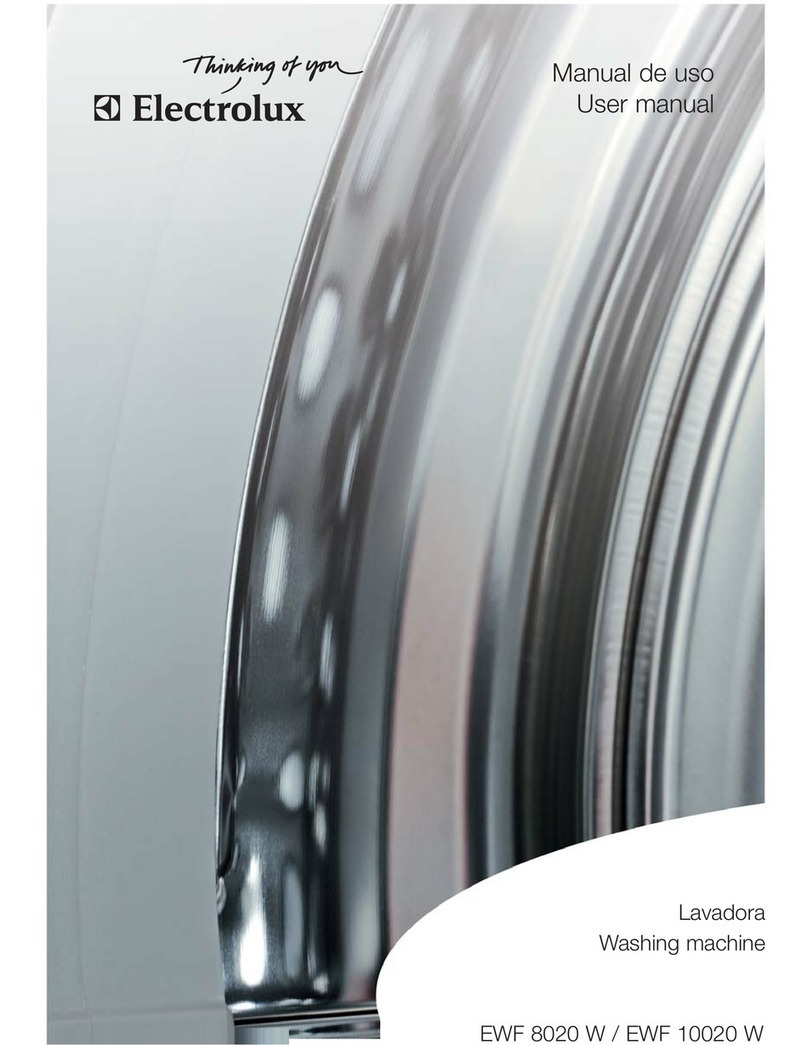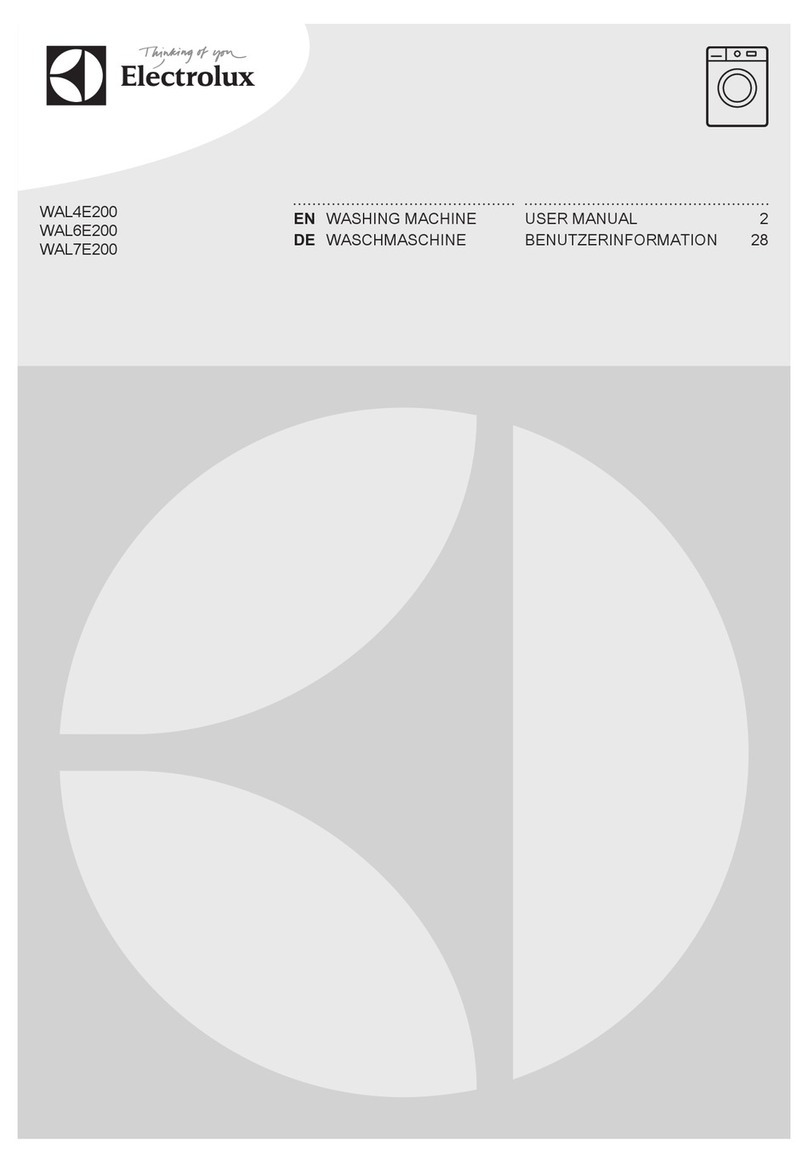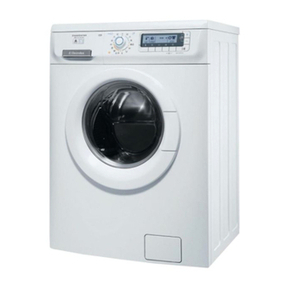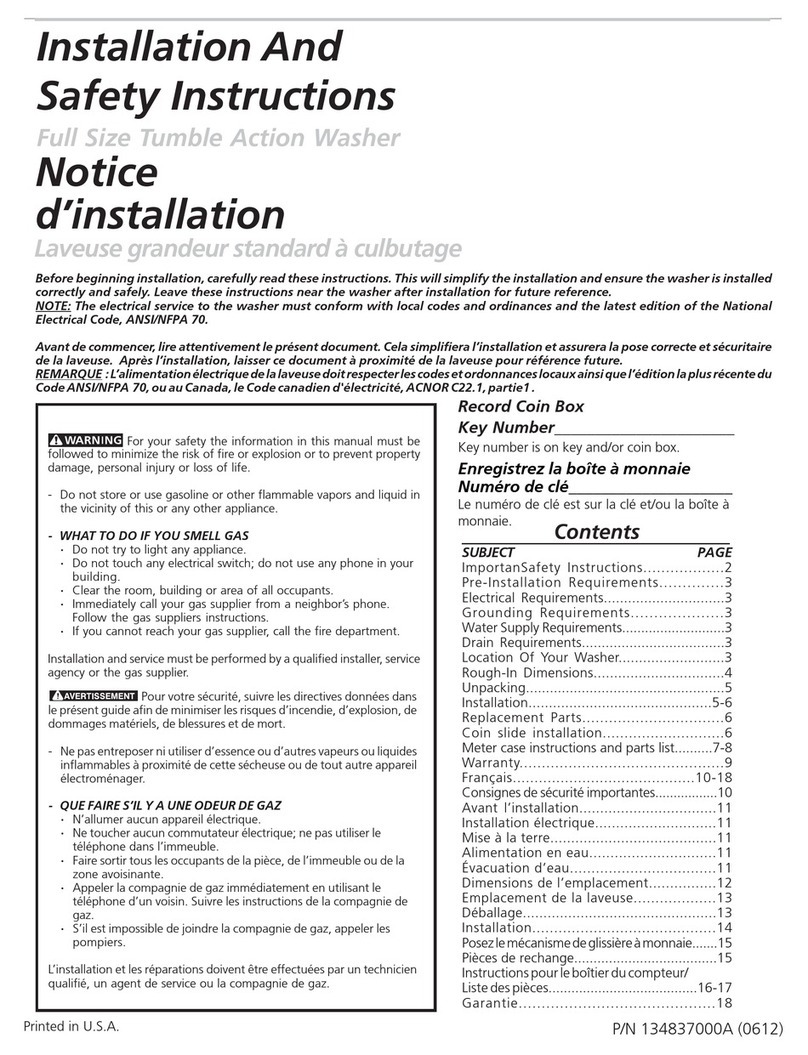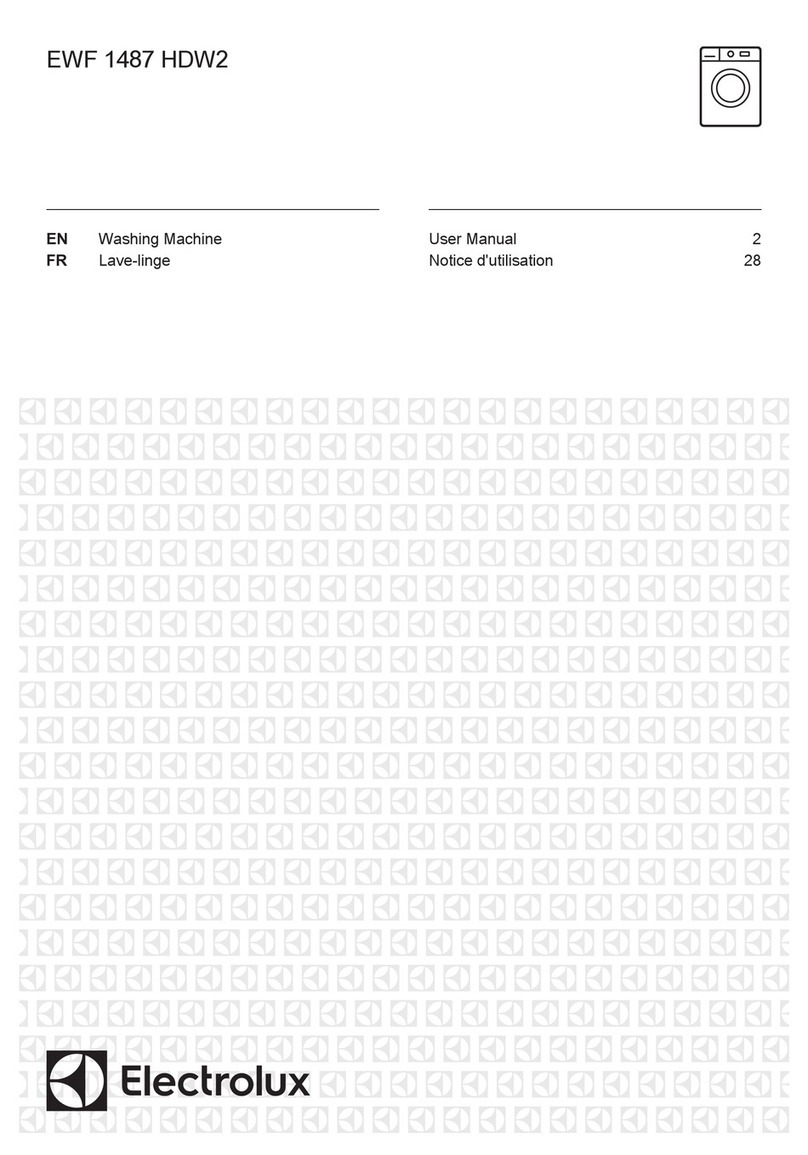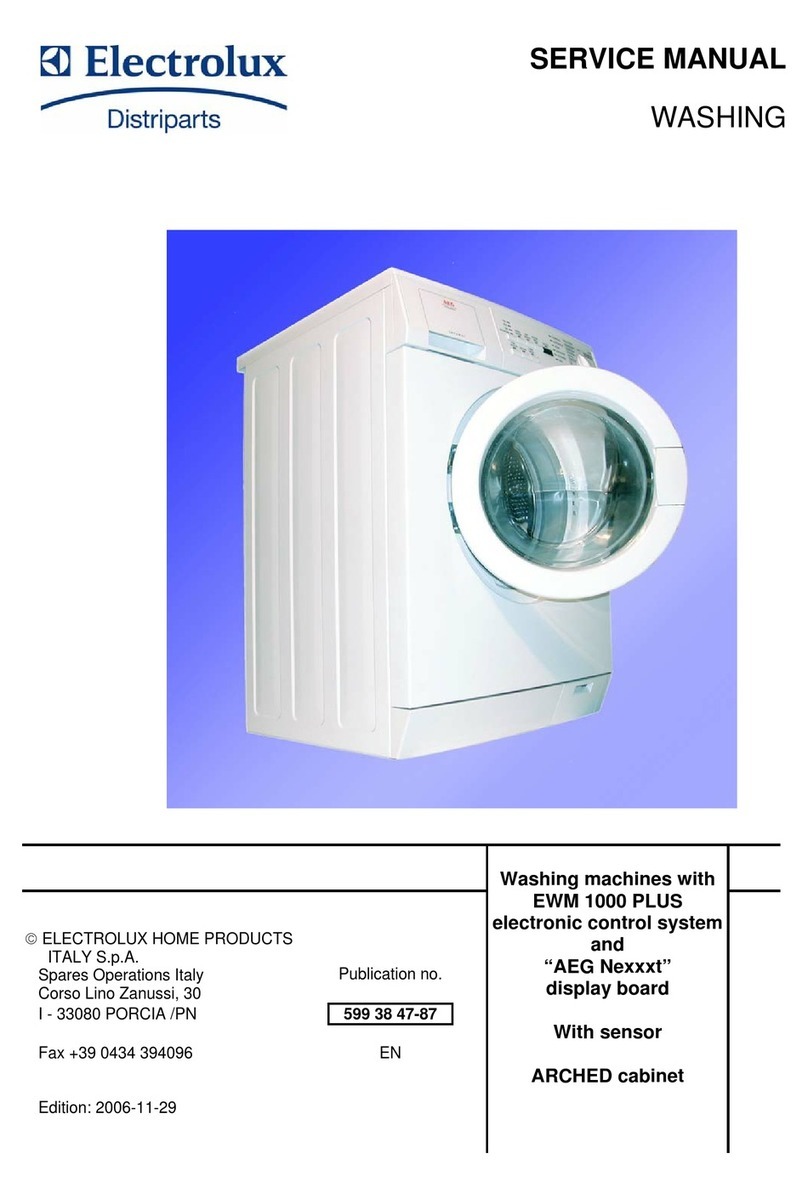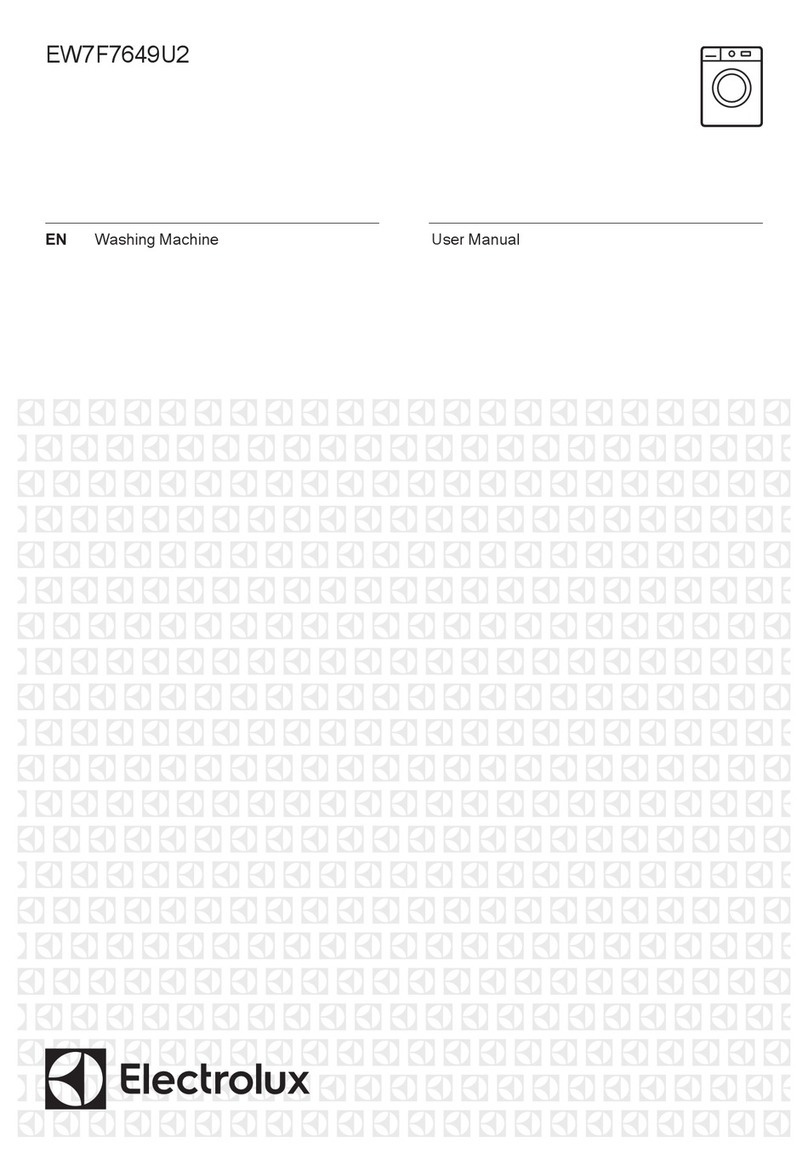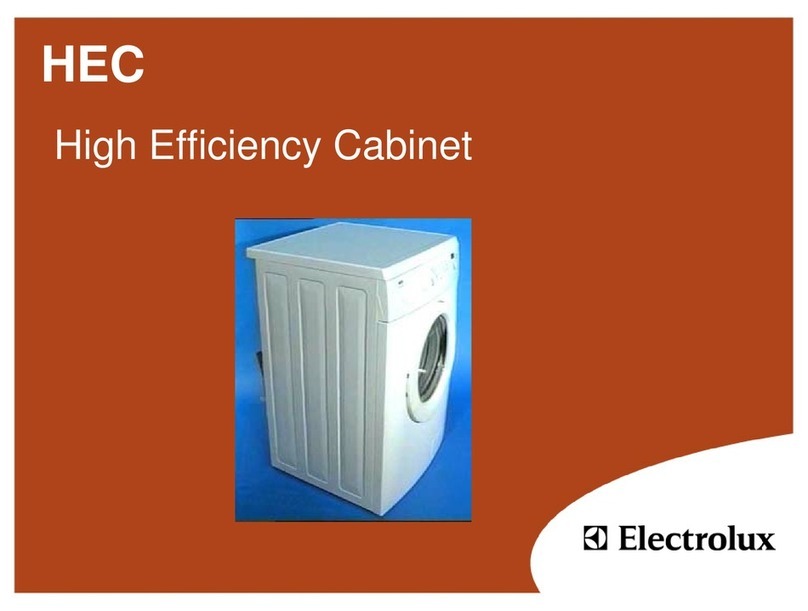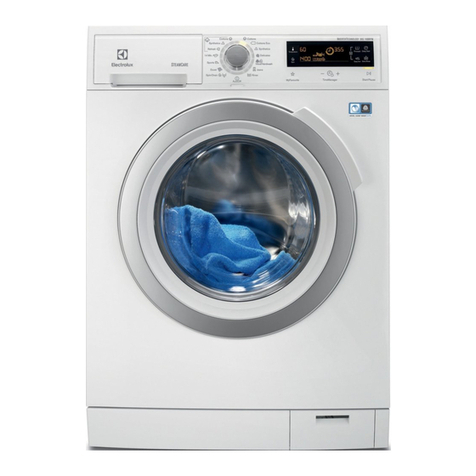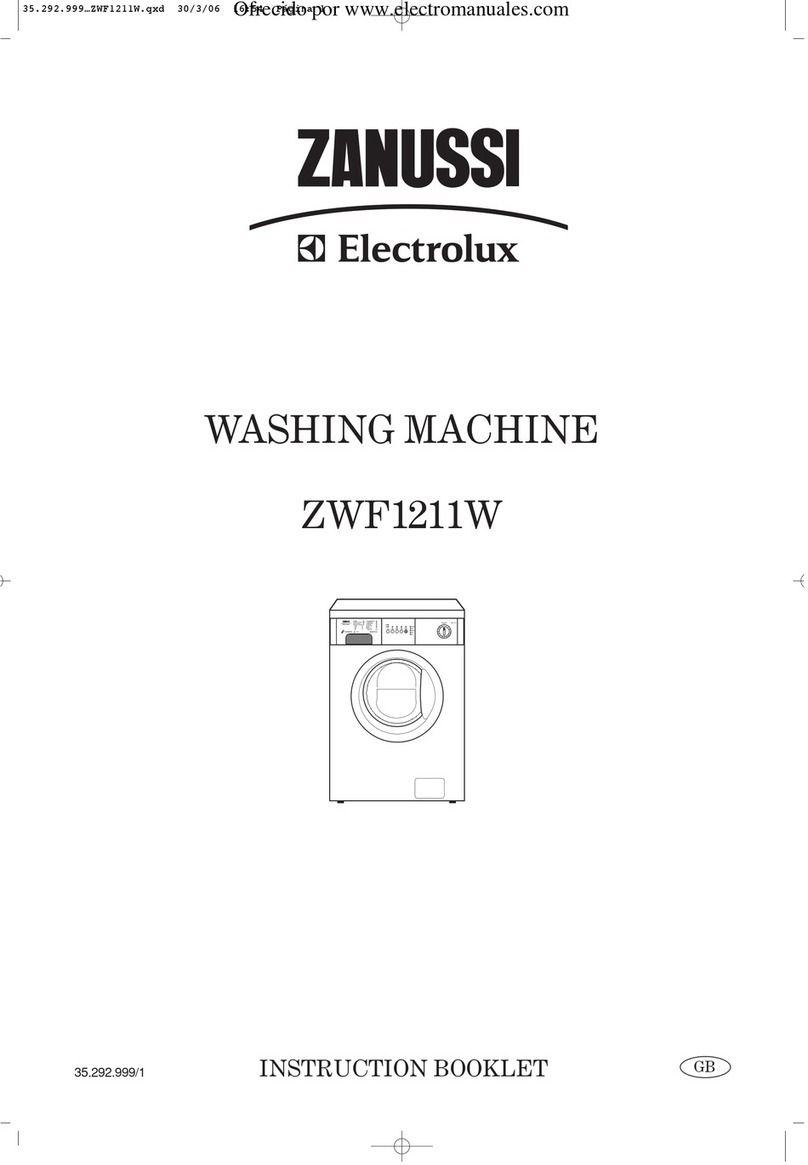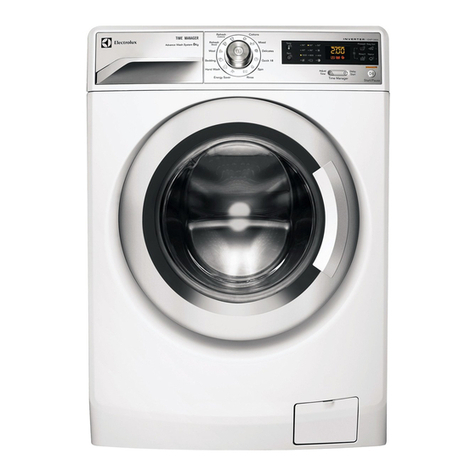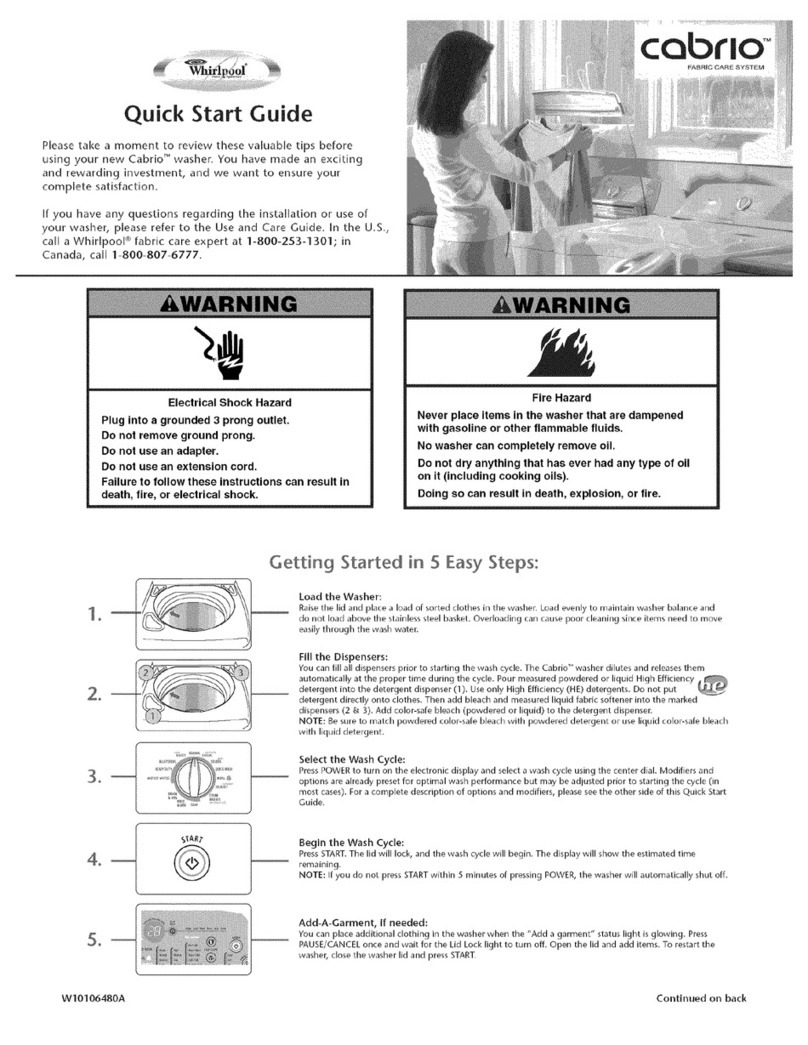
Cycle Selection (continued)
Regular Cycle
The Regular cycle provides up to 15 minutes of wash
agitationformostfabrics.
Extra Rinse Cycle
Use the Extra Rinse cycle after a complete wash cycle
whenanadditionalrinseisdesiredtoremoveexcesssoil
anddetergent. Itprovides 3 minutes of rinseagitation,
followedbyaspinattheselectedrinsewatertemperature
and spin speed.
Select an extra rinse by pushing in the cycle selector
knob and turning it clockwise to Extra Rinse. Pull out
knobto start.
Perm Press Cycle
ThePermPresscycleprovidesupto12minutesofwash
agitationfor cottonsand blends with a no-ironfinish.
Knits & Delicates Cycle
The Knits & Delicates cycle provides up to 6 minutes of
wash agitation for the gentle care of knit and delicate
items.
Soak & Prewash Cycle
•Soak—TheSoaksettingcanbeusedtotreatheavily
soiled or stained items. It provides 3 minutes of
agitation and 12 minutes of soaking time, then
advancestothePrewashportionofthecycle.Usethe
amount of detergent recommended for a normal
wash cycle. For colorfast items, bleach or a soaking
agent may also be used. Follow manufacturer's
directionson the product label.
• Prewash — When soaking is not necessary, the
Prewash setting can be used alone to help remove
protein-basedstainssuchasmilk,grassandbloodand
tohelploosensoilsbeforewashing.DuringPrewash,
the washer will agitate the load for 3 minutes, then
drain,spinandshutoff.Usetheamountofdetergent
andotherlaundryproductsrecommendedforanormal
wash cycle.
Note:
• The Soak water temperature is the same as the
rinse water temperature selected; the Prewash
water temperature is the same as the wash water
temperature selected. To avoid setting protein
stains, select cold water.
• Selectagitate/spinspeedsappropriatefortheitems
being soaked or prewashed.
• Soak and Prewash should always be followed by a
complete wash cycle using the recommended
amountofdetergent.
Energy Saving Tips
•Wash full loads. Oversize loads use extra energy.
Undersize loads waste energy.
•Whensmallwashloadscannotbeavoided,uselower
water levels.
•Select the appropriate cycle and time for each load.
Shorten wash times for lightly soiled loads.
•To reduce drying time, select a fast spin speed to
removemorewaterfromheavyitemssuchastowels
and jeans.
•Usewarmwatertowashmostloads.Limithotwater
washes to heavily soiled and white loads. Use cold
water for lightly soiled items and rinsing.
•Operatethewasherinearlymorningandlateevening
when utility demands are low.
•Followproperlaundryprocedurestoavoidrewashing.
P/N131973200 (0006)
Printed in U. S. A.
WASH/RINSETEMPERATUREsetswatertemperatures
forwashingandrinsing.Selectwashwatertemperature
according to fiber content, soil level and type of
detergent.Acoldwaterrinsesavesenergyandreduces
wrinkling. The following chart suggests wash/rinse
temperatures for basic fabric types.
Wash water in the Automatic Warm/Cold and
Automatic Warm/Warm settings is regulated to
approximately 90° F. and the wash water in the
Automatic Cold/Cold setting is regulated to
approximately70°F. Rinsewatertemperaturesarenot
regulated.
Controls
Always follow instructions on fabric care labels.
Wash/Rinse
Fabric Type Temperature
Heavily soiled white/colorfast Hot/Cold
cotton, perm press
Lightly soiled white/colorfast Warm/Cold
cotton, perm press
Noncolorfast fabrics, knits,
delicates, hand washables Cold/Cold
Washable woolens Warm/Warm
AutomaticWashTemperature
The normal temperature of warm and cold wash water
can be affected by the hot water heater setting and
seasonally low ground water temperatures in some
geographic areas. Since detergents work best in wash
waterataminimumof65°F,selectanAutomaticWash
Temperaturetoregulatethetemperatureofthewarm
and cold wash water in any cycle.
LOADSIZEsetstheamountofwashandrinsewaterfor
the wash load. Select a water level appropriate for the
load size. There should be enough water for items to
move freely.
• Toincreasewaterlevelafterthewashcyclebegins,turn
the Load Size control to Reset and hold. When water
beginstoenterthetub,turnthecontroltothedesired
setting.
AGITATE/SPIN SPEEDS sets speeds for the agitation
and spin portions of each cycle. The following chart
suggests agitate/spin speeds for basic fabric types.
Fabric Type Agitate/Spin Speed
Regular Normal/Fast
Perm Press Normal/Slow
Delicates / Washable woolens Gentle/Slow
Knits Gentle/Fast
Hand washables Gentle/Slow




